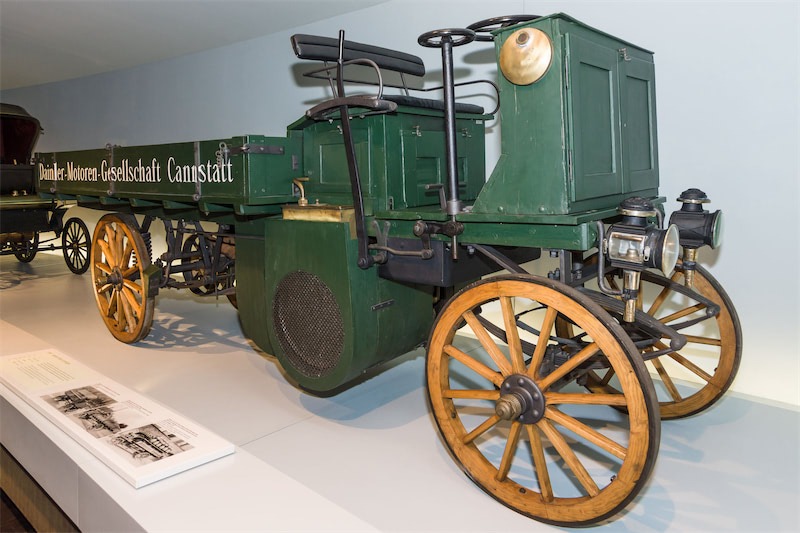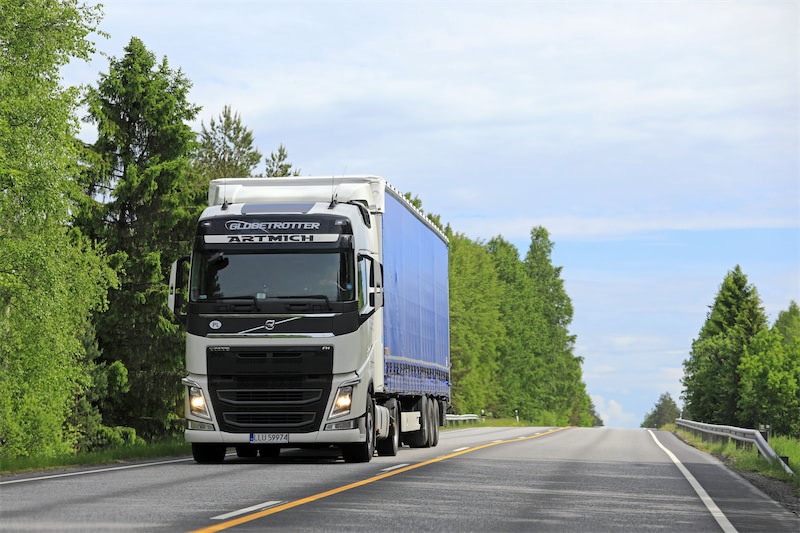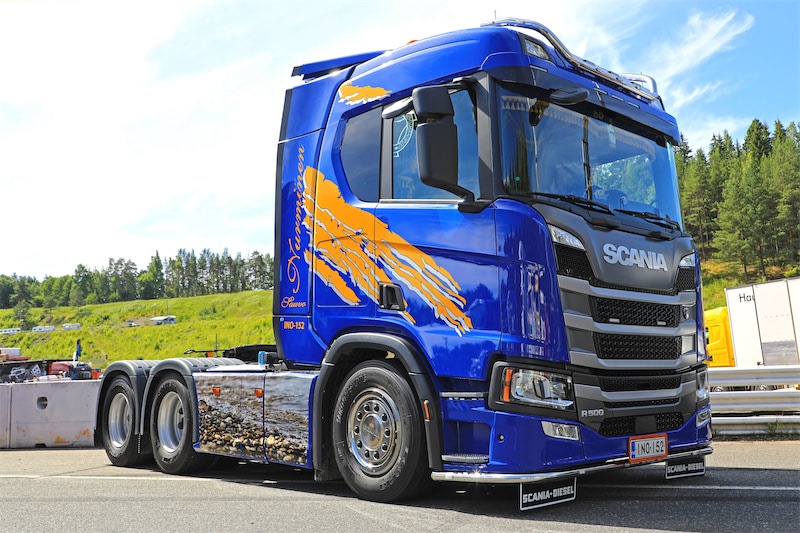What’s the history of the truck, what did it first look like, and what made it look and function the way it does today?
In this blog article you’ll read:
Name ‘truck’
To begin with, how did the name truck originate? The word ‘truck’ is a derivative of trochos, which means wheel in Greek. In America, they called the large wheels of covered wagons trucks. The truck in the U.S. was then called motor truck, but at that time it was still pulled by horses. When trucks were no longer pulled by horses, the word engine disappeared into “motor trucks” and they called it trucks in America.
Origins
Steam engine
In 1856, the truck was invented. Then it was powered by a steam engine. But the first trucks weren’t very convenient to use. The British manufacturer ‘Foden’ made from 1856 to 1917 mainly steam trucks.
Gasoline engine
But steam trucks aren’t actually real trucks yet. Only a few years later came a better engine. In 1893, the first truck with a gasoline engine came out, made by the Czech company Nesseldorfer Wagenbau Fabriks Gesellschaft (aka Tatra).
The first real truck was released in 1896 by Gottlieb Daimler and Karl Benz. This truck was actually a passenger car that had rear wheel drive via leather belts. This was the basic design for the first trucks.
The image below shows the first truck of Daimler-Motoren-Gesellschaft

Diesel engine
A little later than the gasoline engine came the diesel engine. Conceived by Rudolf Diesel. The first diesel engine was built by MAN in a truck in 1915. Even then, driving on diesel was advantageous for companies. Only the purchase price was high, because the development of the diesel engine was very expensive. In addition, diesel engines were still quite heavy in the beginning and produced comparatively little power.
Tractor unit
Renault presented the first tractor in 1923 for road transport.
Hesselman Engine
Diesel was not yet ‘your cup of tea’ due to the previously mentioned disadvantages. That’s why Jonas Hesselman invented the Hesselman engine in 1925. This engine started on petrol and then switched to diesel as soon as it had reached operating temperature. Just one year before this, MAN introduced a diesel engine with direct injection. With direct injection, the fuel enters the combustion chamber directly, instead of going through a carburetor (atomizing and mixing the fuel with air) via an air stream, resulting in lower fuel consumption.
Turbo compressor
DAF introduced the turbocharger added to the diesel engine in 1959. In this, the turbine is driven by the exhaust gas. The turbine sits on the same shaft as the compressor, which ensures that the compressor is also driven. The compressor, in turn, causes pressurized air to be forced into the engine’s intake duct.
Front steer
Today, all European trucks have a so-called front steering wheel. In 1962 was the breakthrough of the front steer. These are trucks with a flat front. In fact, American trucks often have a torpedo nose. With a front steer, a trucker has more overview and can carry more cargo on the truck.
This picture shows a truck with front steering

Turbo-intercooling
DAF came up with turbo intercooling in 1973. This allowed higher engine outputs to be achieved with lower fuel consumption and the realization of cleaner exhaust gases also became possible. In the years 1980-1989, this turbo-intercooling was further developed into the Advanced Turbo Intercooling (ATI). The ATI had better injection technology and a better combustion chamber due to having more power.
Even better engines
In 1987 Scania came out with an injection pump with electronic diesel control (EDC). Then in 1991 Scania came out with an 11-liter engine that had a turbocharger. This uses energy left in the exhaust gas to provide additional drive to the flywheel. In 1996 the 4-series came out with more electronics. And in 2005 the R-series, with a more modern interior and improved streamline. In 2007, Scania came out with a Euro 5 engine that does not require AdBlue. AdBlue ensures that nitrogen oxide emissions are converted into water and nitrogen. This is because these substances aren’t harmful to the environment. And in 2011, Scania was the first to have Euro 6 trucks.
The photo below shows the Scania R500

So, the truck has a rich history. Now there are already plans for the future in terms of self-driving trucks, better fuels or more electric trucks. TrucksNL is curious to see what will eventually happen in the further development of the truck.
Sources (in Dutch):
- Sustainability using telematics: 4 helpful tips - 24 February 2023
- What should you look for when buying a trailer? - 8 February 2023
- Are you taking advantage of your earned rest time? - 15 September 2022

